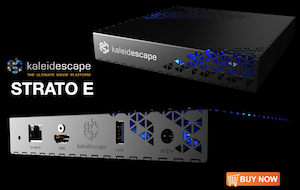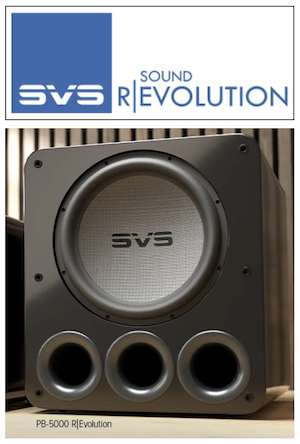Indy Audio Labs Officially Releases Its Acurus Muse Processor and M8 Amp
(Acurus) The all-new Muse preamp (top) and M8 amplifier.(February 15, 2019) Indy Audio Labs, makers of Aragon and Acurus branded home theater processors and amplifiers, has officially launched the all-new Acurus Muse immersive sound processor and M8 amplifier.
Originally revealed at CEDIA 2018, Muse is a highly capable pre-pro that carries a rather tempting price tag of $5,500. The unit offers owners 16-channels of processing power, delivering up to 112 different surround sound and immersive sound audio configurations. That figure includes immersive arrays taking advantage of Muse’s 15.1 Atmos processing capabilities and 11.1 DTS:X decoding; Auro-3D technology – the third immersive technology on the market – is not included. Of course, a range of legacy codecs along with upmixing solutions like Dolby Surround and DTS Neural:X are provided.
Video-wise, Muse offers HDMI 2.0b compatibility. That means full support for modern 4K HDR video requirements, including HDCP 2.2 copy protection and Dolby Vision passthrough. The unit’s backside offers owners seven HDMI inputs along with two HDMI outputs (one is HDMI 2.0b, the other is HDMI 1.4).
Connectivity features also include 12 balanced XLR outputs and a DB9 connection point. If you’re doing the math, it quickly becomes evident that Muse’s native XLR outputs can’t support a 16-channel setup. That’s where the DB9 connector comes into play. Acurus sells a single CAB-20 cable ($249) that splits the DB9’s output into four balanced XLR connections… thus adding the necessary channels for 15.1 performance.
In order to fine tune output, Muse’s settings offer fairly standard loudspeaker adjustments (delay, polarity, speaker size, and crossover settings), along with PEQ and Acurus’s proprietary ASPEQT Room Correction System.
The front of Muse’s reasonably small rack-mountable chassis (3.5” x 17” x 15”, 23 lbs) is wickedly gorgeous, sporting the Acurus name laser etched in a black satin anodized faceplate. Here, you’ll also find a colorful 5” LCD touch-panel that gives access to a user interface that Acurus says is “intuitive” (setup is also available through a free mobile app).
According to Indy Audio Labs Co-Founder/CTO, Ted Moore: “With the availability of the Muse and M8, Acurus has performance audio solutions that span a huge spectrum of installer applications, especially given the Muse’s ability to natively decode 16-channels of Atmos content.”
Speaking of the M8 ($3,500), this 8-channel amplifier delivers 160 watts per channel (8 ohms, all channels driven, THD <0.08%) or 320 watts per channel in bridged mode, using a class D topology. Interface options include IR, 12V trigger, RS232, Ethernet, and compatibility with various third party solutions.
The M8’s size matches that of the Muse, while adding 11 lbs to the overall weight.
“Applications are abound for the M8, including bundling as a companion amplifier for our ACT 4 20-channel immersive processor when rack space is a factor,” says Moore.











